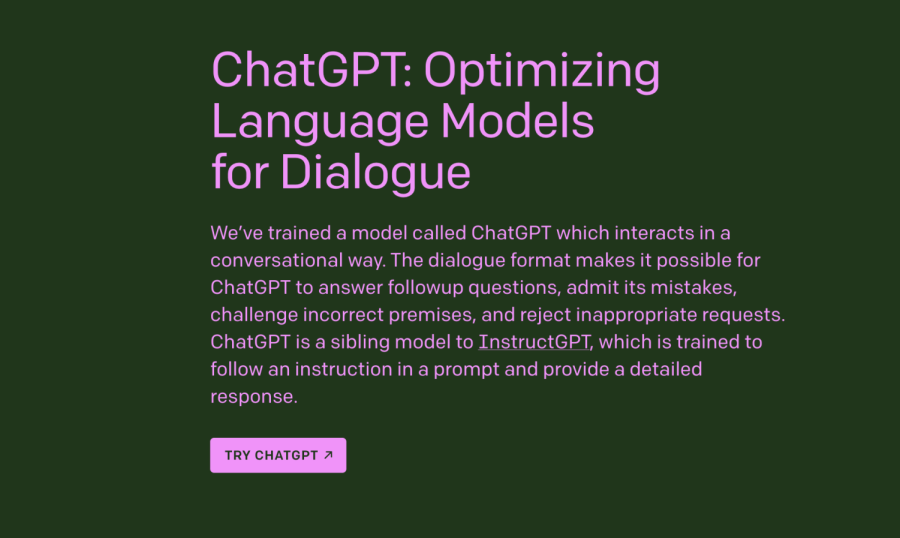The ChatGPT Dilemma
January 24, 2023
ChatGPT is a state-of-the-art language model developed by OpenAI. It is trained on a massive amount of data and can generate human-like text. It can be used for various natural language-processing tasks, such as text generation, language translation, and question-answering. It is a powerful tool for businesses, researchers, and developers to improve their natural language understanding and generation capabilities.
Believe it or not, that previous paragraph was written by an Artificial Intelligence called ChatGPT. The AI can do things like coding and writing essays, and it can even just have a human-like conversation with you. Some students are starting to even use this and other Artificial Intelligence models to complete their school assignments. Students love this program because they can use it to skip out on their essays and other assignments. It can be dangerous to trust AI to do these things.
Teachers have begun to combat this by using programs to identify if a submission has been generated by AI. The New York City Department of Education has taken another approach by just banning the use of ChatGPT altogether. A student at Princeton developed a program to detect if a piece has been written by AI. Teachers are starting to use this detaction app to tell if their students cheated on their assignments by using the AI. This program, developed by Edward Tian, called GPTZero, is able to detect if a piece has been written by ChatGPT by looking for things that are not normally said by humans. One example of this is how in the first paragraph, the AI uses phrases like “state-of-the-art” and by saying things like “It can be used for various natural language-processing tasks.” These phrases are comprised of words that normal humans won’t commonly use in their writing.
I went in and ran this article through the program. It was not able to tell that the first paragraph was generated by ChatGPT, and in fact, it thought that one of my own sentences was generated by AI. According to the program, the most likely sentence to have been AI generated was “some schools have taken another approach by just banning the use of ChatGPT altogether. The program also said that the “text is likely human-generated.” I also looked online and found that others were also very commonly misled by GPTZero, saying that AI-generated texts were likely human-made.
In conclusion, ChatGPT can be a very useful tool for many things, but it can be detected. It also doesn’t produce vivid, memorable writing. It feels a little generic. Also, the creator GPTZero said he’s already made significant improvements to the detection app since people are using it now, and that there are more improvements along the way. If you are going to use ChatGPT, don’t use it to write whole essays on topics. One way that you could use the program is for finding information on a certain topic and use that as a springboard. For example, if you want to write an essay on whales, you can get ChatGPT to give you information on whales. Then you could further research whales for more specifics, more modern findings on whales, and then you can focus on improving the language itself. Also, ChatGPT is free for now because it’s in a brief research phase. It will eventually be a monthly subscription service, and it’s estimated that it might even be about $50 a month. Don’t replace your brain with something you might not be able to afford. Finally, if you use ChatGPT, be sure to use it in a way that your teachers would approve.












